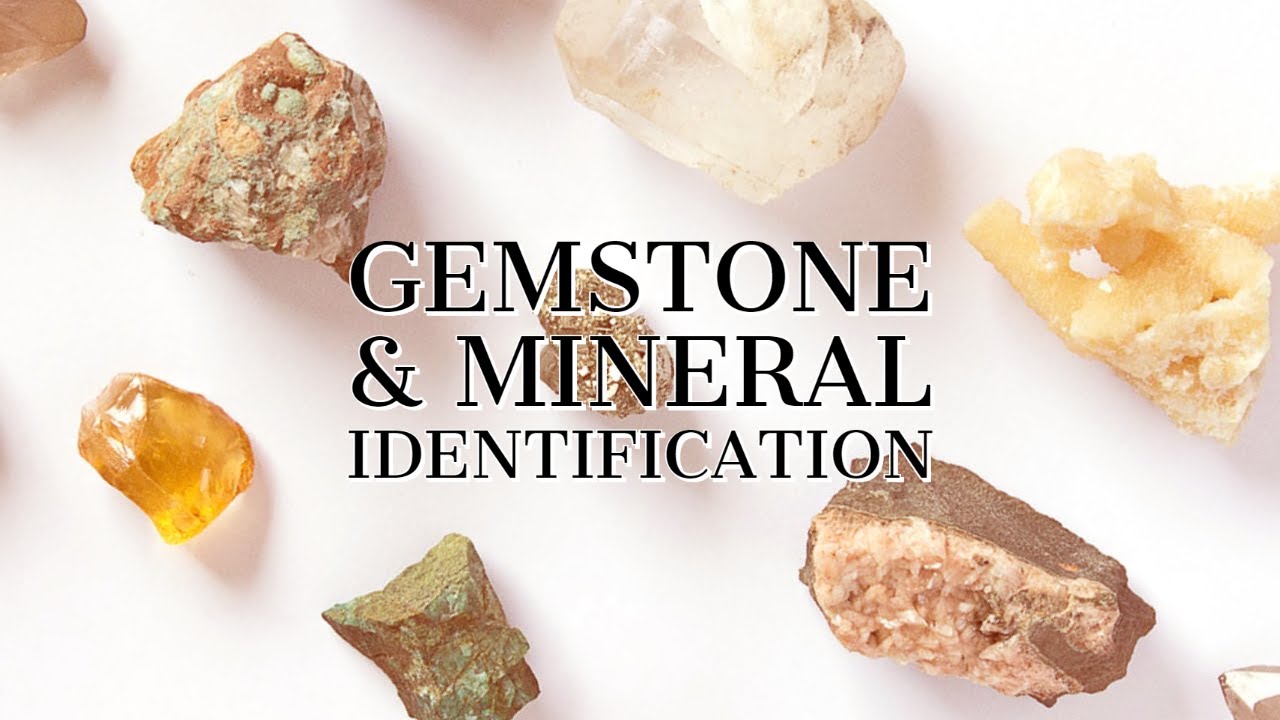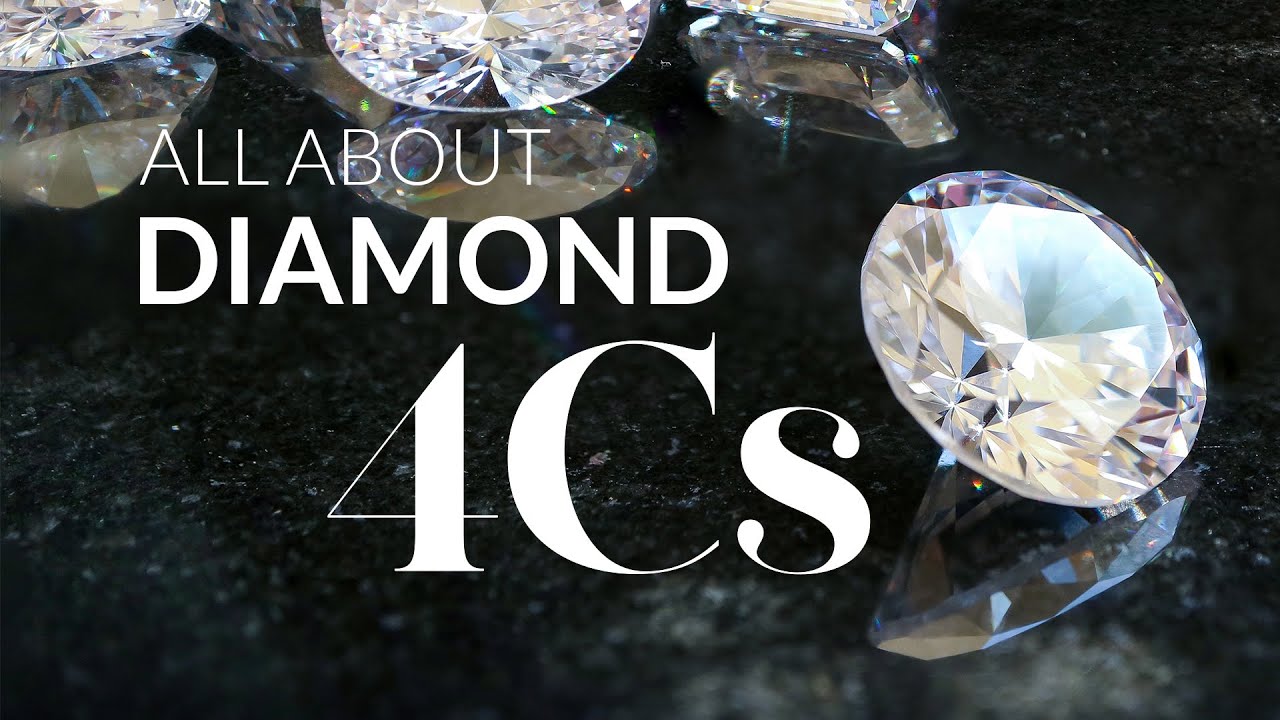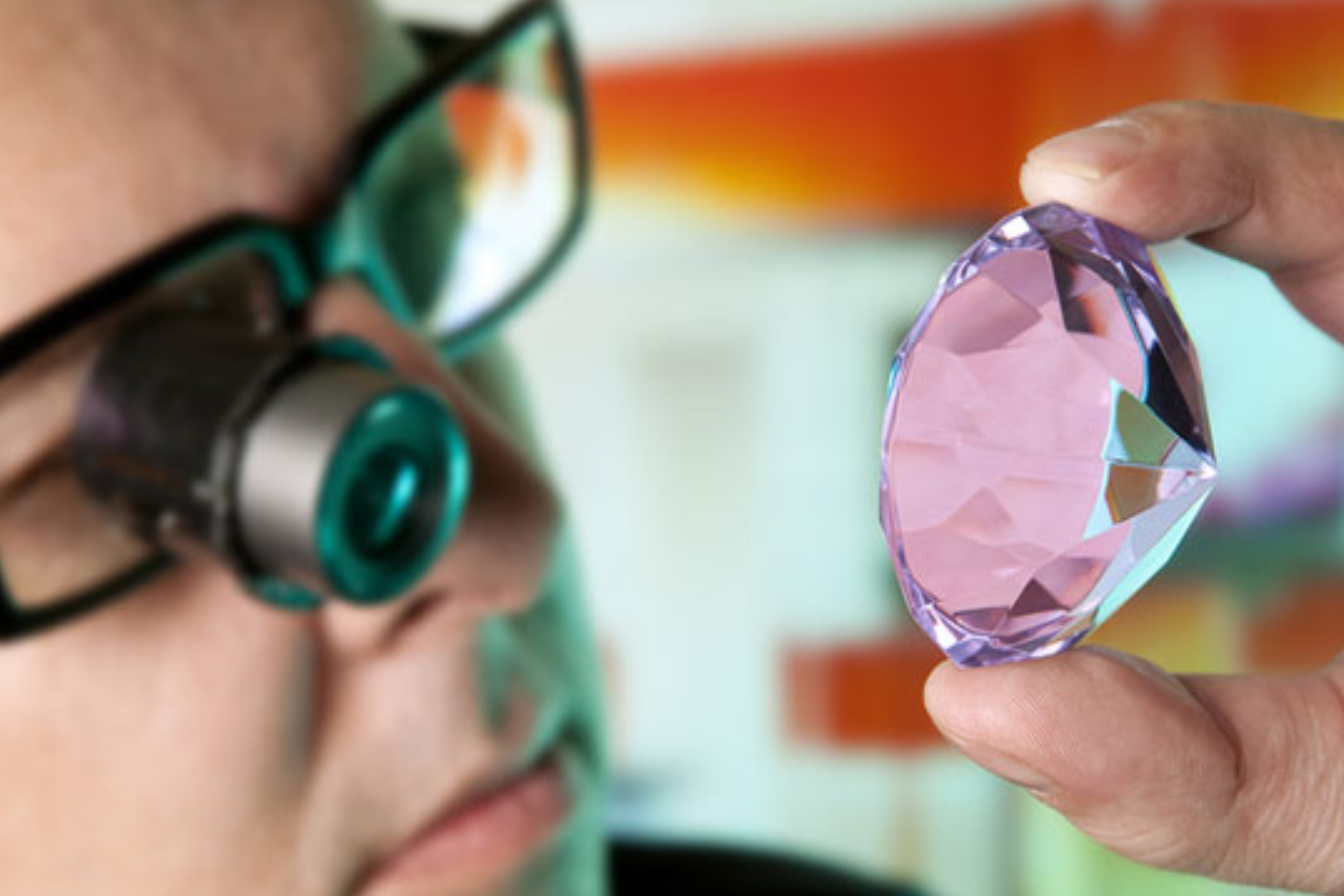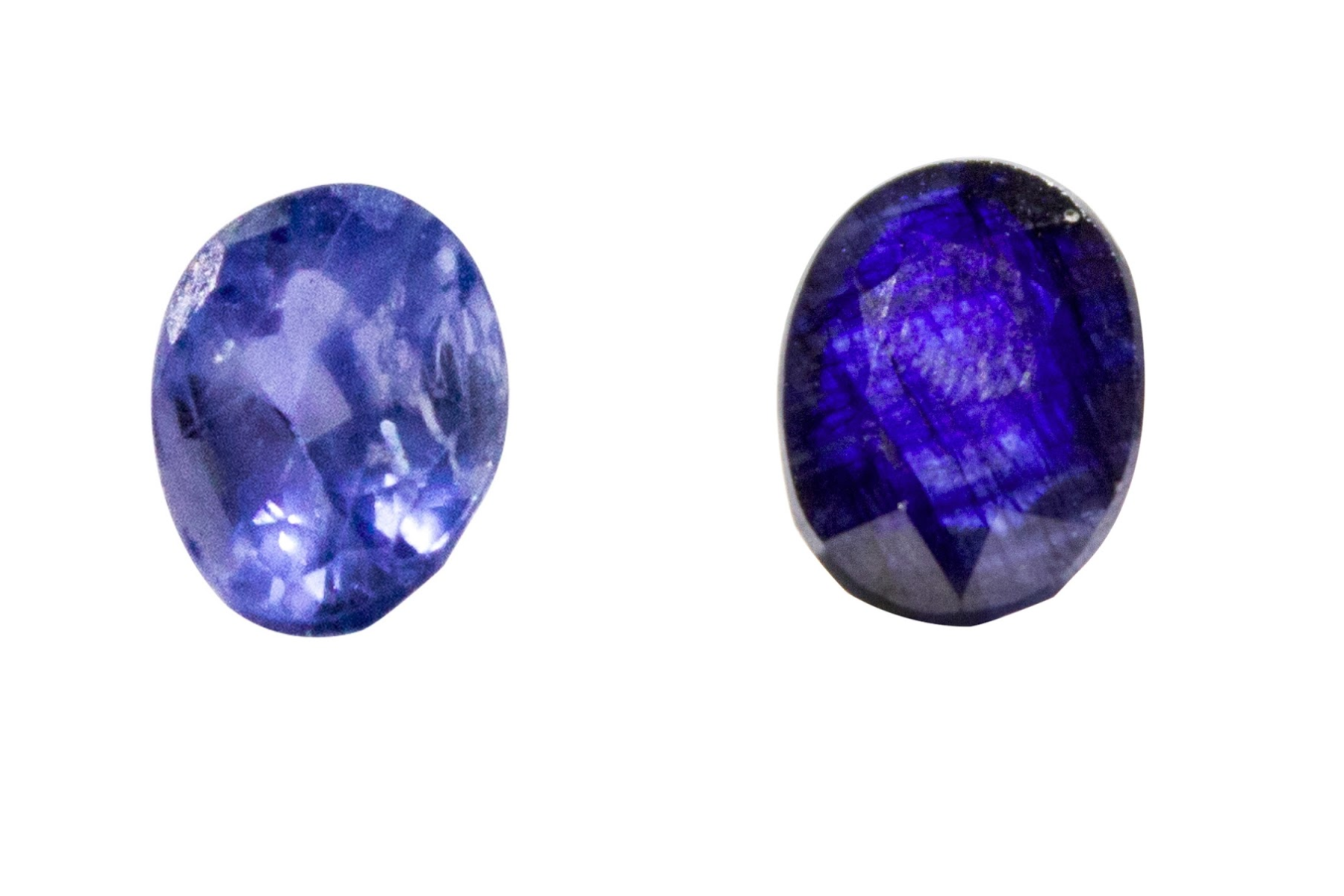In this article, we will delve into the fascinating world of gemstone identification and grading, exploring the methods used and the factors considered in this process.
Gemstoneshave captivated human beings for centuries with their exquisite beauty and rarity. From diamondsto rubies, emeralds to sapphires, these precious stones hold immense value and allure.
Gemstoneshave been cherished for their beauty and rarity throughout history. Their unique characteristics and allure make them highly sought after in the jewelryindustry.
To ensure that gemstones are accurately identified and their quality is assessed, gemstone identification and grading processes are employed.
However, not all gemstones are created equal. To accurately assess their quality and determine their worth, gemstone identification and grading play a crucial role.
What Is Gemstone Identification?

Identifying Gems and Minerals | Stone Reference Guide | Moonstone Mamas
According to the International Gem Society, tests of a gem's optical and physical qualities are used in the identification process, which aims to identify a gem by eliminating all but one of the potential candidates. In addition to this, it requires observation that is informed by both knowledge and experience.
Gemologists use various techniques and instruments to examine the gemstone's color, clarity, cut, and carat weight. By analyzing these factors, they can identify the gemstone's species and variety.
The Importance Of Gemstone Grading
The process of grading gemstones entails determining the gemstone's overall quality as well as its value. It takes a number of aspects into consideration, including things like color, clarity, cut, and carat weight.
A systematic technique for evaluating gemstones is provided by grading. This makes it possible for buyers and sellers of gemstones to effectively express the quality and value of the stones.
Factors Considered In Gemstone Identification And Grading
- Color- Color is one of the most crucial factors in gemstone identification and grading. The hue, tone, and saturation of a gemstone's color significantly impact its value. Gemstones with vivid and intense colors are generally more valuable.
- Clarity- Clarity refers to the presence of any internal or external flaws, known as inclusions and blemishes, respectively. Gemstones with high clarity and minimal inclusions are considered more valuable and desirable.
- Cut- The cut of a gemstone determines its shape, proportions, and overall craftsmanship. A well-cut gemstone reflects light in an appealing manner, enhancing its beauty and brilliance.
- Carat Weight- Carat weight refers to the size and weight of a gemstone. Larger gemstones of the same quality are generally more valuable than smaller ones.
Gemological Laboratories And Certification
Gemological laboratories are an extremely important part of the process of identifying and grading gemstones. In order to evaluate gemstones, these independent organizations make use of gemologists who have received extensive training and make use of specific equipment and methods.
They provide certifications and reports that specify the properties of the gemstone, such as the species, variation, and quality of the gemstone.
Which gem certificate is best? Katerina Perezstated that the Gemological Institute of America, or GIA for short, is without a doubt the most well-known gem testing facility in the world.
Techniques And Instruments Used For Gemstone Identification
Gemologists employ various techniques and instruments to identify gemstones accurately. Some commonly used methods include:
- Visual Examination - Gemstones are visually inspected to assess their color, clarity, and overall appearance. Gemologists use their expertise and experience to identify gemstone characteristics.
- Refractometer- A refractometer measures the refractive index of a gemstone, which helps determine its optical properties and potential identity.
- Spectroscope- A spectroscope analyzes the absorption and transmission of light by a gemstone. It can provide valuable information about the gemstone's color and any possible treatments.
- Microscope- A microscope allows gemologists to examine the gemstone's internal features, such as inclusions and growth patterns, which aid in identification.
- Specific Gravity Test- The specific gravity test compares the weight of a gemstone in air to its weight in water. This test helps determine the gemstone's density and can aid in identification.
- Ultraviolet Testing- Ultraviolet testing involves examining how a gemstone reacts to ultraviolet light. Different gemstones exhibit unique fluorescence properties that can assist in identification.
Common Gemstone Treatments And Their Impact On Grading
Gemstones are sometimes subjected to a variety of treatments in order to improve their color or clarity.
The grading of the gemstone as well as its value may be altered as a result of these procedures. Irradiation, fracture filling, and heat treatment are some of the more prevalent types of therapies.
The Four Cs - A Closer Look At Diamond Grading
Diamonds, being the most popular gemstone, have their own grading system based on the four Cs: color, clarity, cut, and carat weight.

What are the 4Cs of diamond?
Color
Diamonds are graded on a color scale from D (colorless) to Z (light yellow or brown). The absence of color contributes to a diamond's value.
Clarity
The clarity of a diamond is determined by the presence of internal or external flaws, known as inclusions and blemishes, respectively. The fewer the flaws, the higher the diamond's clarity grade.
Cut
The cut of a diamond affects its brilliance and sparkle. The quality of the cut is evaluated based on proportions, symmetry, and polish.
Carat Weight
The carat weight measures the size and weight of a diamond. Larger diamonds are rarer and generally more valuable.
Popular Gemstone Grading Systems
Several gemological institutions have established grading systems to assess gemstone quality and provide standardized reports. Some widely recognized grading systems include:
GIA (Gemological Institute Of America)
The GIA is one of the most renowned gemological institutions globally. Its grading system is widely accepted and trusted in the industry.
AGS (American Gem Society)
The AGS has its own comprehensive grading system, focusing on cut, color, clarity, and carat weight.
EGL (European Gemological Laboratory)
The EGL is known for its grading reports that provide detailed information about a gemstone's characteristics.
IGI (International Gemological Institute)
The IGI offers grading services and certifications for gemstones, including diamonds and colored gemstones.
How To Identify Gemstone Imitations
Gemstone imitations are materials that resemble natural gemstones but are not genuine. To identify imitations, gemologists use a combination of visual examination, gemological tests, and their expertise.
Common gemstone imitations include synthetic gemstones, glass, cubic zirconia, and various forms of plastic.
Here is the guide for you from Mellora:
- It will have Flaws.
- It wouldn't be Cheap.
- The Sparkle and Shine will differ from Synthetic Stones.
- The Weight of the Gemstone will differ.
- Always ask for the Gemstone Lab Report.
The Drawbacks Of Not Knowing The Identification And Grading Of Gemstones
Risk Of Counterfeit Or Synthetic Gemstones
- Due to a lack of information regarding gemstone identification, there is an increased risk of falling prey to fake or synthetic gemstones.
- Synthetic gemstones are those that are generated artificially in laboratories, whereas imitation or counterfeit gemstones are those that are intended to look like genuine jewels.
- In the absence of adequate identification skills, individuals run the risk of unwittingly purchasing synthetic or imitation gemstones, which can result in a financial loss.
Difficulty In Determining Gemstone Quality
- The color, clarity, cut, and carat weight of a gemstone are just some of the characteristics that are evaluated throughout the grading process. This helps establish the gemstone's overall quality and worth.
- It may be difficult for individuals to appropriately evaluate the grade of a gemstone if they are not familiar with the relevant grading standards.
- Because of this lack of understanding, people may end up overpaying for gemstones of poor quality or undervaluing those of higher grades.
Limited Marketability Of Gemstones
- The marketability of gemstones is directly correlated to their correct identification as well as their grades.
- Gemstones that come with reputable identification and grading certifications encourage confidence in prospective purchasers, resulting in a transaction procedure that is more streamlined overall.
- In the absence of the essential information, individuals may have difficulty selling gemstones or may find it difficult to find customers ready to pay an acceptable price for the gemstones.
Inability To Make Informed Purchasing Decisions
- Individuals get the ability to make educated purchasing selections when they have a solid understanding of gemstone identification and grading.
- Individuals are better equipped to capitalize on profitable chances when they have identification knowledge since it enables them to recognize rare or unusual gemstones.
- If individuals lack this expertise, they run the risk of missing out on the opportunity to acquire priceless gemstones or of making uneducated purchases based purely on appearance.
Challenges In Jewelry Appraisals
- Appraisals of jewelry need precise identification and grading of gemstones in order to arrive at a conclusion on the item's value.
- Due to a lack of awareness in this area, it is possible for evaluations to be wrong, which could result in gaps in insurance coverage or a loss of financial resources.
- Without the appropriate identifying skills, individuals may have a difficult time locating trustworthy appraisers or accurately determining the value of their own jewelry.
Care And Maintenance Of Gemstones
Proper care and maintenance are essential to preserve the beauty and longevity of gemstones.
Some general guidelines include storing gemstone jewelry in a safe and dry place, avoiding exposure to harsh chemicals and extreme temperatures, and regular cleaning using mild soapy water and a soft brush.
People Also Ask
How Long Does The Gemstone Identification Process Typically Take?
The duration of the gemstone identification process can vary depending on various factors such as the complexity of the gemstone, the availability of equipment, and the workload of the gemological laboratory. It can range from a few hours to several days.
Can Gemstone Grading Affect The Price Of A Gemstone?
Yes, gemstone grading significantly impacts the price of a gemstone. Higher-quality gemstones with superior color, clarity, cut, and carat weight command higher prices in the market.
Are Gemstone Treatments Common?
Gemstone treatments are relatively common in the industry. They are used to enhance the appearance of gemstones by improving their color or clarity. However, it is important for these treatments to be disclosed to buyers.
Can Gemstone Imitations Be As Valuable As Natural Gemstones?
Gemstone imitations, even if they closely resemble natural gemstones, do not possess the same value as their natural counterparts. Natural gemstones are rare and formed through geological processes, making them inherently more valuable.
Are All Gemstones Suitable For Everyday Wear?
While many gemstones are durable enough for everyday wear, some gemstones are more susceptible to scratching or chipping. It is important to consider the hardness and durability of a gemstone before choosing it for regular wear.
Conclusion
Gemstone identification and grading are crucial processes in the world of gemstones. Through careful examination of factors such as color, clarity, cut, and carat weight, gemologists can accurately assess the quality and value of these precious stones.
Gemological laboratories and grading systems provide standardized reports, ensuring transparency and confidence in the gemstone market.
By understanding gemstone identification and grading, both buyers and sellers can make informed decisions and appreciate the true beauty of these remarkable creations of nature.


